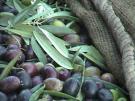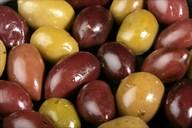
Apparently, so my ‘friends’ tell me, most women seem to have a difficult time (understatement?) reaching orgasm during intercourse; that is if they are able to orgasm at all…here we go…the most common reason for this is that they don’t know their own bodies…oh REALLY?.err...Female masturbation is unheard of??? I believe everyone should play with themselves to learn how their body reacts to different stimuli.
Orgasms can’t be forced, and things should really be taken slowly…if possible; don’t worry if this is not the case: finishing in seconds is not unheard of or even a bad thing…depending on the circumstances. Learn techniques, experiment with them and find what works best and if you start getting frustrated when you don’t see the expected results then try again, and again…and again… (Ahem): sex is supposed to be fun and enjoyable and as soon as you make it too serious the pleasure can fade.
So I’ve been told, (oh boy...) there are more than one type of orgasm a women can have: when masturbating women usually learn to get themselves off (sorry) using their clitoris and there is nothing wrong with that, in fact well done all of you (yikes…UKBBCR5LMB smilie here; apologies to those of you who haven't a clue what I mean!...you're not missing anything!) ...but this leaves the whole world of vaginal orgasms untapped. Coitus, commonly known as vaginal sex, can be one of the clumsiest ways to stimulate a woman but while it does provide an atmosphere that can be highly arousing (phew!...us guys are here for something at least!) as well as fairly erotic at times and emotionally satisfying, the actual degree of stimulation to the woman's clitoral area is nothing compared to that achieved by her own masturbation or cunnilingus…excuse me while I take a break….bag of ice please…
Incorporation of manual stimulation to the clitoris during sex is not entirely necessary if your woman has had vaginal orgasms in the past especially if you know how to hit her G spot correctly… you need to make sure you are “hitting” the G spot with each stroke and this is impossible (or very lucky!!!) if you do not ‘know’ their body…guys, the key to female ejaculation is G spot stimulation.
Of course you need to relax and enjoy yourselves, as that is the most important part: desperate and over- energetic endeavours need to be avoided...or coordinated!…the necessary pressure exerted on the woman's clitoris can be accomplished by rotating your hips... just like sad version of a bad disco jig but here the effect of rotating or rocking back and forward could have better results than those dance floor manoeuvres.
I must say I prefer the woman sitting on top, (is that laziness?) and in this case the man should lie as flat as possible but with the pelvis tilted upward and the stomach muscles tightened… or stressing the ab-flab as the case may be; hips arched upwards to improve the quality of ‘the grind’…oh dear, did I say that?... at the same time he could/ should put his hand over the woman’s heavenly mound - you know the one I mean - with his thumb on the her clitoris so while the woman is riding him he can simultaneously stimulate her clitoris.
If, on the other hand...no, not that hand...the woman is lying on her back, the man could lie almost at a right angle (rather than sprawled all over her...guys?); this can be a great position for deep penetration and exposes the clitoris for manual stimulation…this ‘double’ stimulation should/could often lead to the big O rather more quickly than expected…did I just say “big O”?...
Alternatively, if the woman lies on her back with her legs tightly together and the man, instead of being directly in line with her is at a slight diagonal and with his own legs slightly apart...for comfort (both of her legs over one shoulder or on one side of his body), he can maximize female clitoral stimulation; this is easier if the man is standing or kneeling and the woman has her legs hanging off a desk, table, sofa or bed…and it is much more fun than it sounds...oh boy is it...apparently. No links in this post but I’m sure you/ we all know better and so do not need extra input…

S.O. orgasm
orgasms
 Halloween special....a Sexy Witch...
Halloween special....a Sexy Witch...









